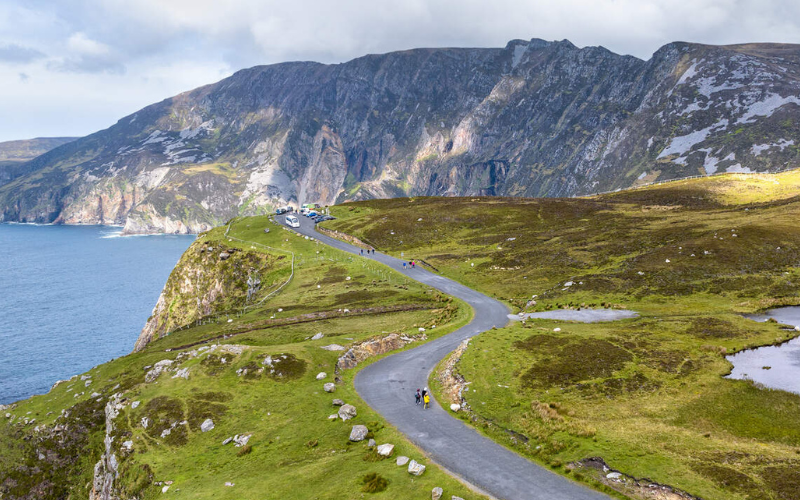Lately, I’ve been craving oysters, crab, and mussels. I could write it off to the fact that I keep seeing rafts of the succulent treats on shopping forays. Like many things I’ve written of, however, I’m sure the shellfish love affair that began in my childhood with clams, oysters, shrimp and crab, was my father’s doing. During summer vacations we spent many a dawn netting crabs off a New Jersey pier. We made monthly pilgrimages to all-you-can-eat Friday night shrimp feasts at Dad’s VFW Post. On rare restaurant outings, we shared plates of clams on the half-shell like co-conspirators in on some briny secret when everyone else was ordering chowder.
One of Dad’s favorite ditties was “Molly Malone.” I learned to warble the song before I learned the alphabet. “In Dublin’s fair city where the girls are so pretty, I first set my eyes on sweet Molly Malone, as she wheeled her wheelbarrow through streets broad and narrow, crying Cockles and Mussels, alive alive-oh!” For some reason, I just never put it all together. Molly. Mussels. Dublin. Ireland.
The Irish have been eating shellfish since humans first set foot on the Emerald Isle. Huge shell piles called middens have been found at every seaside archaeological site, which proves that shellfish were a dietary mainstay for Ireland’s Mesolithic hunter-gatherers. Some mollusks were used to make the rare purple dyes reserved for garments of kings and princes, but for the most part shellfish provided a vital source of protein along with fish and marine vegetables like dulse, laver and carrageen moss. Eons later, during the Great Famine, the inhabitants of fishing villages survived best. Ironically, tales of starving famine victims desperately searching the beaches for food turned succeeding generations against shellfish. It took more than a hundred years for the bitter memory to fade.
Today, mussels and oysters take top billing on the list of Irish mollusks, but in times past all manner of shellfish were eaten. The catch was especially rich in Galway Bay, once the exclusive territory of fishermen who lived in a settlement near the Spanish Arch, known as the Cladach (Beach). A 19th century advertisement for fish sold on Claddagh Quay offers “...cods, lings, hawkfish, turbets, plaises, pilchards, liberal of oysters, scallops, cokles, musles, razures, and plentie of lobsters, crabs and shromps.”
The wide-open Atlantic off Ireland’s western coast has always been known for its abundance. Tomas O’ Crohan, who was born on Great Blasket Island in 1856, wrote about local seafood in his masterpiece The Islandman. “The food I got was eggs, lumps of butter, fish, limpet and winkles – a bit of everything going from sea to land...My mother had brought a dish of limpets from the strand with her...She was roasting the limpets and throwing them to us one by one like a hen with chickens.”
According to the Gaelic proverb: Ri sea Diuilicini ach ria tualaigh sea bairnight (Mussels are the food of kings, limpets are the food of peasants.) Certainly mussels are bigger, more flavorful and easier to prepare in a myriad of ways than tiny limpets. But it was their easily acquired abundance that made the blue-black bivalves a primary food item for rich and poor alike. Mussels grow almost everywhere. They are found clinging to offshore boulders, adhered to the rocks of pebble beaches, and bound up in the seaweeds of muddy estuaries. When the tides retreat, they are effortlessly harvested by hand or with nets. In his book Irish Folkways, author E. Edtyn Evans related how the waters off the coast of Donegal were once home to so many mussels that they were regularly scraped off the rocks and used to fertilize potato plantings.
Today, thanks to huge offshore farming operations, mussels are the commonest shellfish sold in Ireland, and thus the reason they are found on practically every pub menu. While mussel farming was perfected by the French, the method was actually invented in 1235 A.D. by a Corkman named Walton who was shipwrecked in the Bay of Aiguillon on the west coast of France. Desperation being the mother of invention, Walton devised an ingenious way of trapping sea birds with a net attached by long poles to offshore mudflats. When he discovered that the poles became covered in mussels, the savvy Irishman abandoned bird hunting for full-time mussel farming.
Today mussels are most commonly farmed on ropes suspended from rafts that are anchored in shallow waters. Tiny mussels are seeded onto the ropes, and when the spawn reach a mature size, the ropes are simply pulled up and harvested. Until recently, most of Europe’s mussels were grown in the Mediterranean Sea, but it is now so polluted that Ireland’s pristine waters have become the principal mussels source for the European market.
One of Ireland’s largest mussel farms permanently bobs in Cork County’s Bantry Bay. Washed by the warm waters of the Gulf Stream and sheltered from winds by the mountains that surround it, the bay, which is one of the world’s deepest, provided safe haven to sailing ships for centuries. Then, in the early 1980s local fishermen began setting out mussel pots in the calm waters. What began as an experiment has grown to become a major industry supplying jobs for hundreds of people and earning millions of euros in export trade annually.
Unlike the more meaty mussel, cockles are mere tiny morsels, but delicious nonetheless and abundant as well. In times past, fishermen believed that cockles could not be eaten “until they had three drinks of April water.” Immediately after the third April tide, cockle pickers flocked to the beaches. Where the sand curled like a worm was the place to dig. Sometimes the meat was extracted from the shell with a pin and eaten on the spot, but usually the cockles were taken home, washed to remove the sand, and boiled in salted water. Cockle Pie (cooked cockles and grated onions baked in a pastry shell) was once a favorite supper dish.
Few people go to the bother of gathering mussels or picking cockles anymore, it being easier to purchase from the wide assortment of seafood offered by a neighborhood fishmonger or supermarket. But Molly has not been forgotten. On Dublin’s Grafton Street, a bronze statue of a maid pushing her cart laden with mollusks pays eternal homage to the women who once sold cupfuls of cockles and mussels from wheelbarrows in the Liberties. We always will love you, sweet Molly Malone. Sláinte!
Recipes
Selecting & Cleaning Mussels
Mussels must have tightly closed shells until cooked. If the mussels are placed in a plastic bag, make sure it is left open. Without air the mussels will die. If any are open when you are ready to clean them, a dunk in fresh water or a sharp squeeze should cause the shell to close. Clean mussels just before cooking. Scrub them under running water with a stiff brush to remove debris, and pull off the “beards” (tufts of fibers projecting from the shell that anchored the mollusk to its underwater perch). Never cook a mussel that remains open. Gaping or broken shells mean the mussel has died, and is not safe to eat. Conversely, never eat a cooked mussel if the shell has remained tightly closed.
Classic Steamed Mussels
3 pounds fresh cleaned mussels
2 tablespoons butter
1 medium onion finely chopped
1 bunch parsley, stems removed and minced
2 cloves garlic, minced
1 cup dry white wine
1 cup half and half
Melt butter in a large stainless steel soup pot. Add onion, parsley and garlic, and sauté until wilted. Add mussels, pour in wine, and bring to a low boil. Cover tightly and steam for approximately 5 minutes, or until the mussels have opened. Remove mussels to serving dishes. Add cream to cooking liquid and return to the boiling point. Remove from heat, stir and pour over the mussels. Accompany with lots of crusty bread to mop up the broth. Makes four appetizer servings or two main dish servings.
Garlic Stuffed Mussels
(An Bord Iascaigh Mhara - Irish Sea Fisheries Board)
24 fresh cleaned mussels
1⁄4 cup water
2 tablespoons melted butter
2 cloves garlic, minced
1 cup fine dry bread crumbs
1⁄4 cup minced parsley
fresh lemon juice
salt and pepper
Place mussels in a large pot with the water. Bring to a boil, cover tightly and steam for approximately 5 minutes, or until the shells have opened. Remove and discard one side of each mussel shell and place the mussel halves in a shallow baking pan.
Combine the butter, garlic, breadcrumbs and parsley with lemon juice, salt and pepper to taste. Spoon bread crumb mixture onto each mussel half being sure to cover the meat completely. Place under a pre-heated broiler and grill 5-10 minutes, or until breadcrumbs are golden brown. Makes four appetizer servings.




Comments